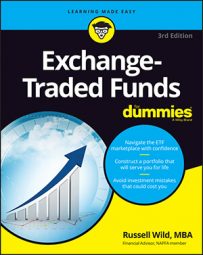On the face of it, dividends look like free money from your ETF investments. But nothing in life is quite so simple. Here are some of the things to be aware of when considering purchasing dividend stocks:
Dividend stocks won’t necessarily increase your overall holdings. Suppose you own an individual share of stock in a company that issues a dividend of $1. The market price of your one share, as a rule, will fall by $1 as soon as the company sends out the dividend. This is because the dividend comes from the company’s cash reserves, and as those reserves diminish, the company’s value diminishes.
If you need a steady stream of income, nothing is stopping you from creating artificial dividends by selling off any security you like. You may pay capital gains tax, but that will be no higher than the tax on dividends.
What if one month you find you don’t need the income? You can sell nothing and pay no tax, whereas with a high dividend ETF, you’ll pay the tax regardless.
The special dividend tax break is set to expire at the end of 2012. Unless Congress extends it, dividends will be taxed at ordinary income rates.
An ETF can’t do a whole lot to lessen the tax hit from dividends. ETFs are head-and-shoulders above most mutual funds when it comes to tax efficiency, but that tax efficiency is aimed at reducing taxable capital gains, not dividends. ETF or mutual fund, you’ll pay.
Equity income funds have been around for years and years, and they haven’t exactly set the world on fire. The age-old Dogs of the Dow strategy, in which you purchase the year’s ten highest-paying dividend stocks in the Dow (the so-called Dogs), so that you can rack up serious returns.
The strategy has been well-studied, and it clearly isn’t as powerful as the hype. It seems to work no better than purchasing any other similarly sized and similarly volatile stocks.
Dividends aren’t always the best way to make money. During the longest bull market in history — the 1990s — stock market returns were running double digits a year, and very little was being shelled out in dividends.
A company that isn’t paying dividends is either investing its cash in operations or buying back its own stock. Either way, shareholders stand to gain. Just because much of the stock market’s past returns have come from dividends doesn’t mean that future returns must or will come from the same source.
High-dividend-paying sectors of the economy don’t necessarily beat the broader market over long periods of time.
Studies of high-dividend-paying stocks reveal that they actually tend to be somewhat more volatile than the broad market.
If you want to go ahead and purchase dividend stocks, consider the Vanguard option (VIG) or the SPDR (SDY). With expense ratios of 0.18 percent and 0.35 percent respectively, they are considerably less costly than the competition. The iShares option (DVY) isn’t too bad, either, with expenses of 0.40 percent.
Last but not least, if you’re not going to be using that dividend money right away, make sure your ETF is held in an account at a brokerage house that will reinvest your dividends without charging you a commission. The vast majority will do so, but not all.

